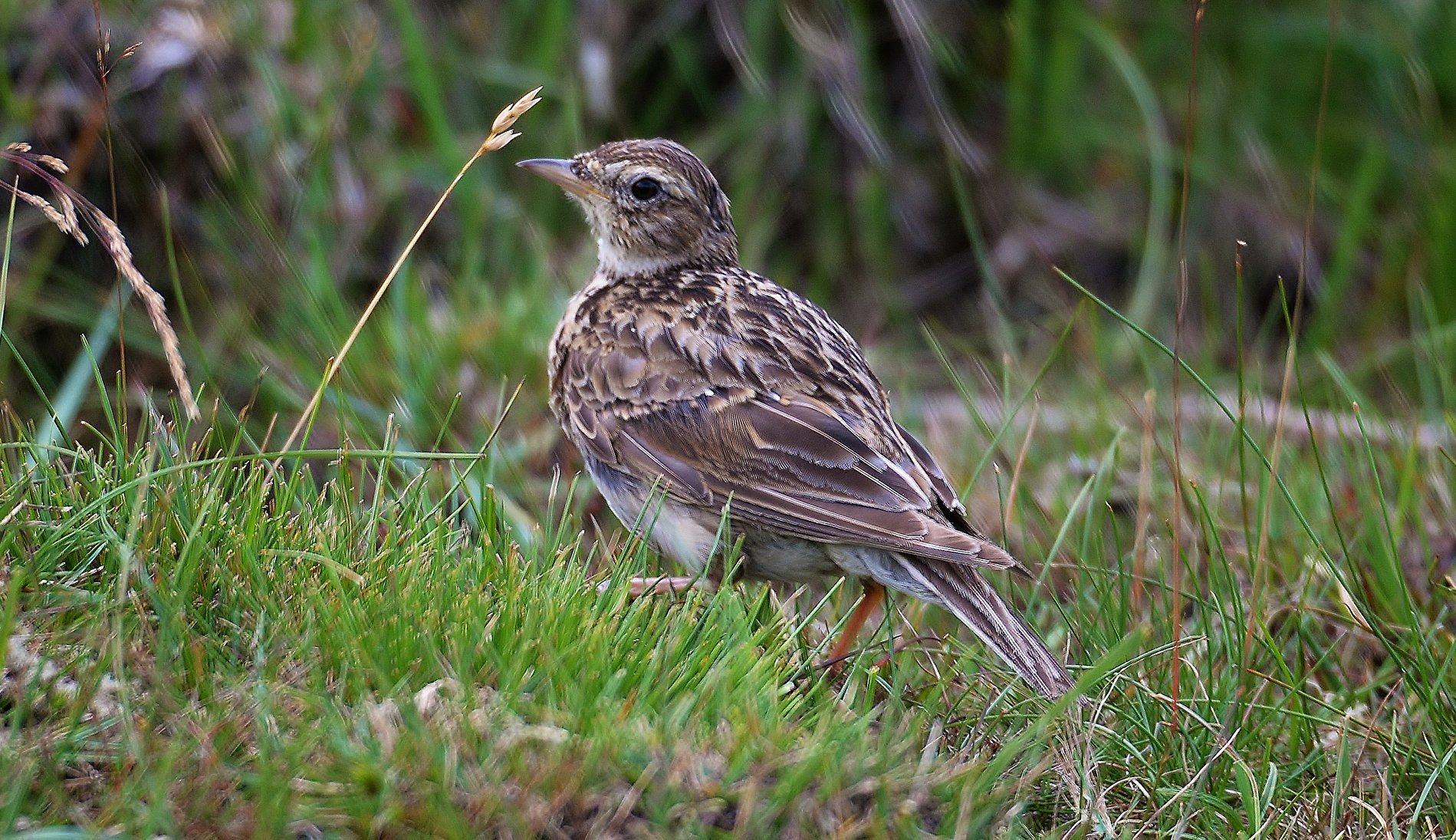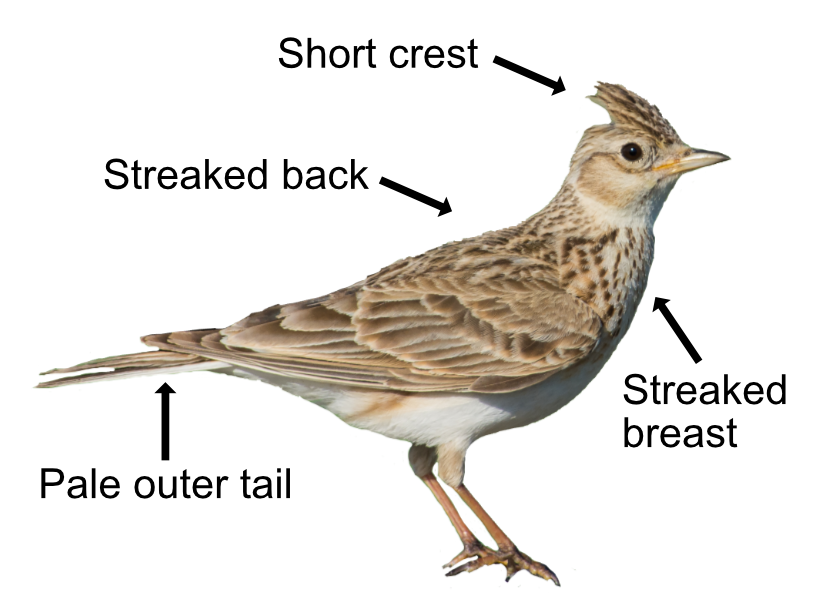
The Woodlark is like a smaller woodland version of a Skylark, though they are not related. It is very much a bird of managed wooded heath, like the New Forest and Dartmoor. A few poets, including Robert Burns, have written odes to the Woodlark because of its beautiful song. It is best seen in February or March, when feeding in winter flocks.
The Woodlark is a streaky brown bird, with a noticeable beige-white eye stripe, which meets across the back of its neck. Its head feathers can stick up in a punk crest. Its unusually short tail and broad, rounded wings are noticeable during the bobbing flight with closed-wing glides. There is a white, black and buff patch on the edge of the wing. It has a lilting, melodious, descending "lu, lu, lu" song, which it sings while flying.

Woodlarks eat seeds and insects like beetles, flies and moths. During the winter months they will gather in small feeding flocks close to their breeding areas. As many as 50-60 birds can be seen together. A few Woodlarks will overwinter on the continent.
They nest in a grassy tussock or a heather bush. Their nest is a shallow scrape lined with bracken, grass and moss. Nesting starts early, often before the end of March. Mum incubates the 3-5 eggs which hatch after 15 days. Both parents feed the youngsters which leave the nest 13 days later. The family will stay together for the summer and into autumn. Two, sometimes three, broods will be raised each year.
About 3,000 pairs breed in Britain. Recent surveys show that numbers are increasing thanks to better heath habitat management.
Their Latin name is 'lullula arborea' where the 'lullula' is derived from the sound of its song and 'arborea' is from the Latin 'arbor' for a tree. The English name, Woodlark, is a little misleading. Although it likes perching on treetops, its usual haunt is heaths. The German name, the 'heidelerche' or 'heather lark', is much more fitting.

